Related Research Articles
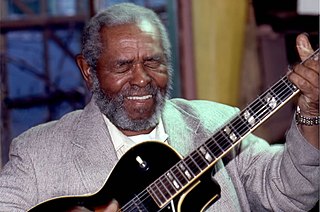
Walter Brown "Brownie" McGhee was an American folk and Piedmont blues singer and guitarist, best known for his collaboration with the harmonica player Sonny Terry.

Bluegrass music is a genre of American roots music that developed in the 1940s in the Appalachian region of the United States. The genre derives its name from the band Bill Monroe and the Blue Grass Boys. Like mainstream country music, it largely developed out of old-time string music, though in contrast, it is traditionally played exclusively on acoustic instruments and also has roots in traditional English, Scottish and Irish ballads and dance tunes, as well as in blues and jazz. It was further developed by musicians who played with Monroe, including 5-string banjo player Earl Scruggs and guitarist Lester Flatt. Monroe characterized the genre as "Scottish bagpipes and ole-time fiddlin'. It's a part of Methodist, Holiness and Baptist traditions. It's blues and jazz, and it has a high lonesome sound."

Arthel Lane "Doc" Watson was an American guitarist, songwriter, and singer of bluegrass, folk, country, blues, and gospel music. He won seven Grammy awards as well as a Grammy Lifetime Achievement Award. His fingerpicking and flatpicking skills, as well as his knowledge of traditional American music, were highly regarded. Blind from a young age, he performed publicly both in a dance band and solo, as well as for over 15 years with his son, guitarist Merle Watson, until Merle's death in 1985 in an accident on the family farm.

Béla Anton Leoš Fleck is an American banjo player. An acclaimed virtuoso, he is an innovative and technically proficient pioneer and ambassador of the banjo, playing music from bluegrass, jazz, classical, rock and various world music genres. He is best known for his work with the bands New Grass Revival and Béla Fleck and the Flecktones. Fleck has won 17 Grammy Awards and been nominated 39 times.

Music in the United States underwent many shifts and developments from 1900 to 1940. The country survived both World War I and the Great Depression before entering World War II in December 1941. Americans endured great loss and hardship but found hope and encouragement in music. The genres and styles present during this period were Native American music, blues and gospel, jazz, swing, Cajun and Creole music, and country. The United States also took inspiration from other cultures and parts of the world for her own music. The music of each region differed as much as the people did. The time also produced many notable singers and musicians, including jazz figure Louis Armstrong, blues and jazz singer Mamie Smith, and country singer Jimmie Rodgers.
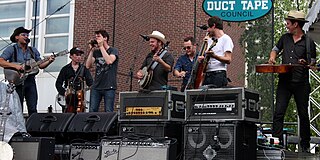
Old Crow Medicine Show is an Americana string band based in Nashville, Tennessee, that has been recording since 1998. They were inducted into the Grand Ole Opry on September 17, 2013. Their ninth album, Remedy, released in 2014, won the Grammy Award for Best Folk Album. The group's music has been called old-time, folk, and alternative country. Along with original songs, the band performs many pre-World War II blues and folk songs.

Tony Furtado is an American singer-songwriter, banjoist, and guitarist.
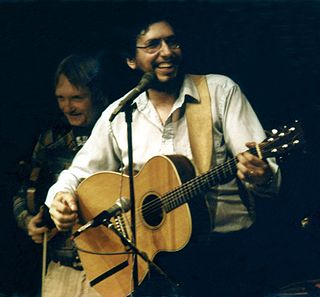
David Bromberg is an American multi-instrumentalist, singer, and songwriter. An eclectic artist, Bromberg plays bluegrass, blues, folk, jazz, country and western, and rock and roll. He is known for his quirky, humorous lyrics, and the ability to play rhythm and lead guitar at the same time.

Peter Hamilton Rowan is an American bluegrass musician and composer. He plays guitar and mandolin, yodels and sings. He is a seven-time Grammy Award nominee.
Americana is an amalgam of American music formed by the confluence of the shared and varied traditions that make up the musical ethos of the United States of America, with particular emphasis on music historically developed in the American South.
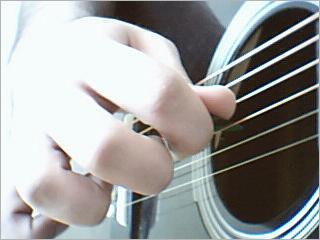
Flatpicking is the technique of striking the strings of a guitar with a pick held between the thumb and one or two fingers. It can be contrasted to fingerstyle guitar, which is playing with individual fingers, with or without wearing fingerpicks. While the use of a plectrum is common in many musical traditions, the exact term "flatpicking" is most commonly associated with Appalachian music of the American southeastern highlands, especially bluegrass music, where string bands often feature musicians playing a variety of styles, both fingerpicking and flatpicking. Musicians who use a flat pick in other genres such as rock and jazz are not commonly described as flatpickers or even plectrum guitarists. As the use of a pick in those traditions is commonplace, generally only guitarists who play without a pick are noted by the term "fingerpicking" or "fingerstyle".
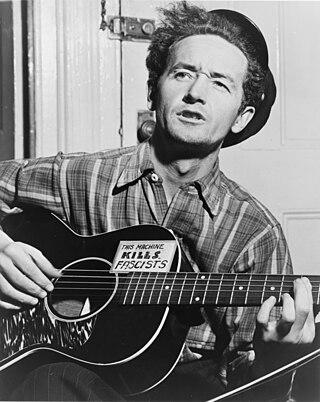
The American folk music revival began during the 1940s and peaked in popularity in the mid-1960s. Its roots went earlier, and performers like Josh White, Burl Ives, Woody Guthrie, Lead Belly, Big Bill Broonzy, Richard Dyer-Bennet, Oscar Brand, Jean Ritchie, John Jacob Niles, Susan Reed, Paul Robeson, Bessie Smith, Ma Rainey and Cisco Houston had enjoyed a limited general popularity in the 1930s and 1940s. The revival brought forward styles of American folk music that had in earlier times contributed to the development of country and western, blues, jazz, and rock and roll music.
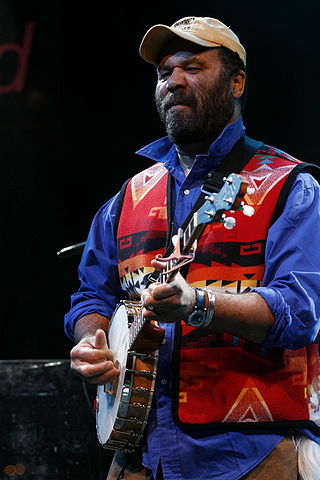
Otis Taylor is an American blues musician. He is a multi-instrumentalist whose talents include the guitar, banjo, mandolin, harmonica, and vocals. In 2001, he was awarded a fellowship to the Sundance Film Composers Laboratory.
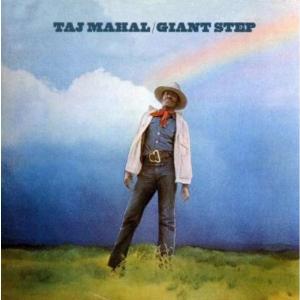
Giant Step/De Ole Folks at Home is the third studio album by American blues artist Taj Mahal. A double album, the first disc is electric, while the second is acoustic. Esquire included the album at number 27 on its list of "The 75 Albums Every Man Should Own".

John Dee Holeman was an American Piedmont blues guitarist, singer, and songwriter. His music includes elements of Texas blues, R&B and African-American string-band music. In his younger days he was also known for his proficiency as a buckdancer.
Lightnin' Wells is an American Piedmont blues multi-instrumentalist and singer. He is a proficient musician and regularly plays various instruments in concert including the guitar, mandolin, harmonica, ukulele and banjo. At times he has performed as a one-man band. His style encompasses elements of the blues, country, gospel, old-time, bluegrass and folk. Mark Coltrain stated in Living Blues that, "You won't find a more versatile musician around – able to move deftly between country blues, old-time banjo, and novelty tunes with a single pluck. Lightnin' Wells changes the past..."
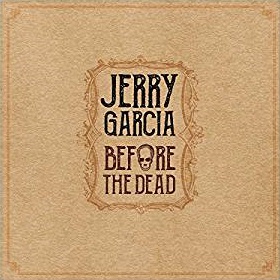
Before the Dead is an album by Jerry Garcia. It is a compilation of early recordings of Garcia playing folk and bluegrass music with various other musicians. The recordings were made from 1961 to 1964, before Garcia co-founded the rock band the Grateful Dead. Produced as a four-CD box set, and also as a five-LP limited edition box set, it was released on May 11, 2018.
"King" Solomon Hicks is an American guitarist, blues, jazz singer, and composer. His style of music ranges from jazz, blues, classical, gospel, R&B, funk, Afro-Cuban, and classic rock. Hicks has been a blues guitarist since he was 13. He plays a Benedetto GA35 guitar. Benedetto jazz guitars are hand crafted by Robert Benedetto an American luthier of archtop jazz guitars. He teaches beginning and advanced guitar along with music theory.
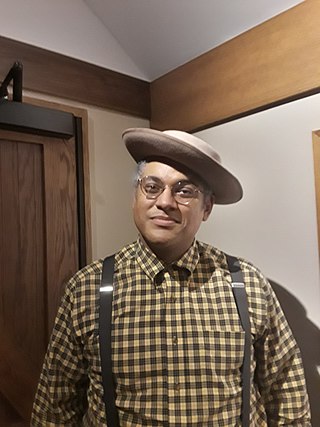
Dominique Flemons is an American old-time music, Piedmont blues, and neotraditional country multi-instrumentalist, singer, and songwriter. He is a proficient player of the banjo, fife, guitar, harmonica, percussion, quills, and rhythm bones. He is known as "The American Songster" as his repertoire of music spans nearly a century of American folklore, ballads, and tunes. He has performed with Mike Seeger, Joe Thompson, Martin Simpson, Boo Hanks, Taj Mahal, Old Crow Medicine Show, Guy Davis, and The Reverend Peyton's Big Damn Band.
References
- ↑ Newton, Steve (January 24, 2014). "Digging for the real facts about Jerron "Blind Boy" Paxton". The Georgia Straight . Vancouver Free Press Publishing Corporation. Retrieved February 2, 2014.
- ↑ Friedwald, Will (November 19, 2012). "Blind Boys and the Bluest of Notes". The Wall Street Journal . Dow Jones & Company . Retrieved February 18, 2013.
- ↑ Panepinto, Peter (July 11, 2011). "Musician Blind Boy Paxton Shares Love of Song With Others at Roots Music and Arts Festival". Carroll County Times . Landmark Communications. Archived from the original on July 13, 2011. Retrieved February 18, 2013.
- ↑ Weichselbaum, Lehman (August 11, 2015). "The Bluesman With The Yarmulke". The New York Jewish Week . The Jewish Week Media Group.
- ↑ "An Old Soul in a Young Musician's Body". Verbum Dei High School. 2016. Retrieved August 8, 2019.
- 1 2 "Rocky Roads to Rhodes Scholar" (PDF). The Crusader. Mount Carmel Alumni Foundation. February 2017. pp. 1–2. Retrieved August 8, 2019.
- ↑ ""BLIND BOY" PAXTON • BLUES". Robbie Collomore Concerts. 2015. Retrieved August 8, 2019.
- ↑ "Blind Boy Paxton with Brandon Bailey". Champaign-Urbana Folk & Roots Festival. Retrieved February 18, 2013.
- 1 2 "Jerron "Blind Boy" Paxton". The Country Blues. Retrieved February 17, 2013.
- ↑ Hautzinger, Daniel (June 6, 2017). "The Performers in 'The American Epic Sessions'". WTTW . Window to the World Communications. Retrieved March 1, 2018.
- ↑ Raliff, Ben (July 21, 2010). "Tunes That Are Steeped in an Old-School Style". The New York Times . Retrieved February 18, 2013.